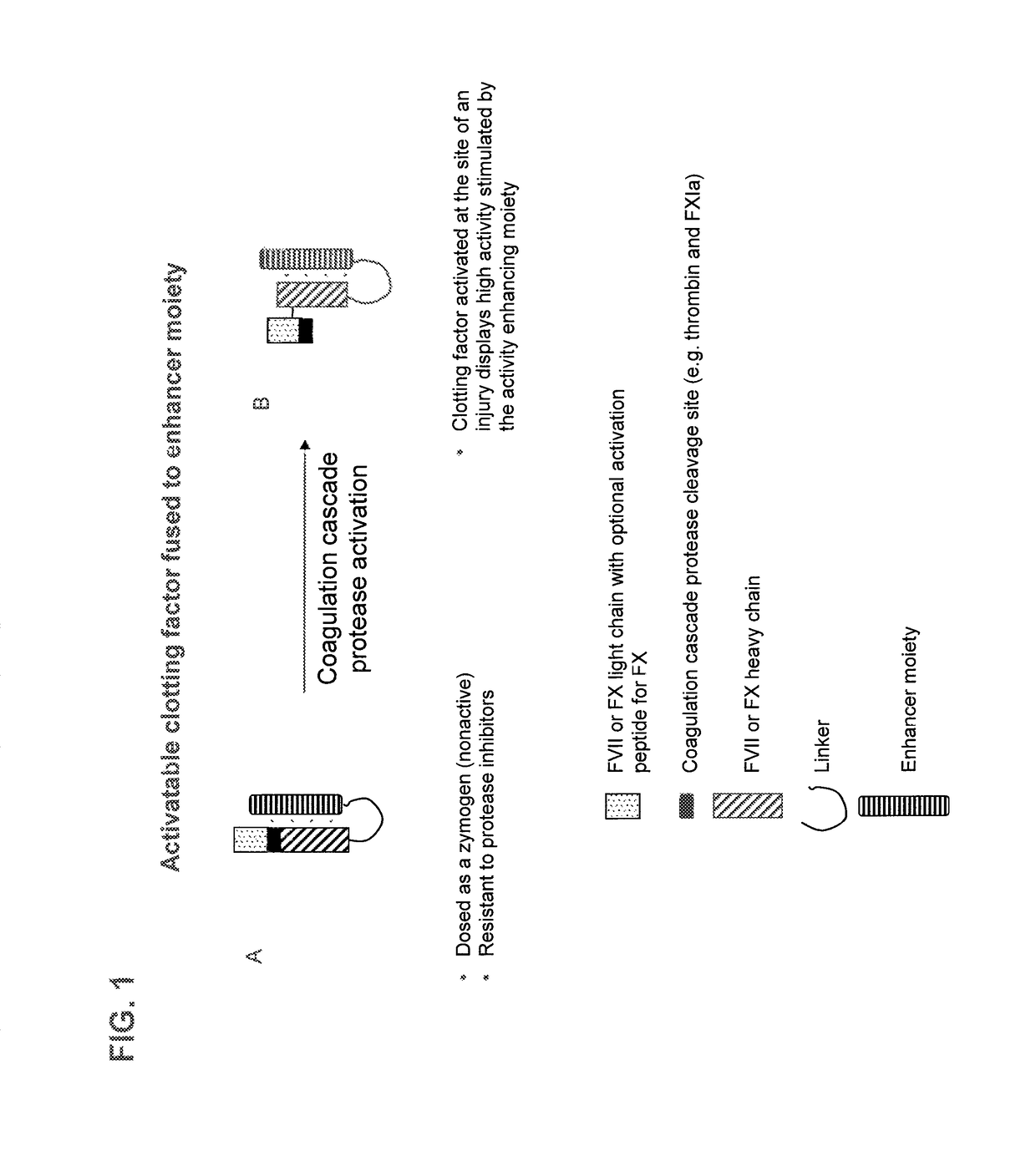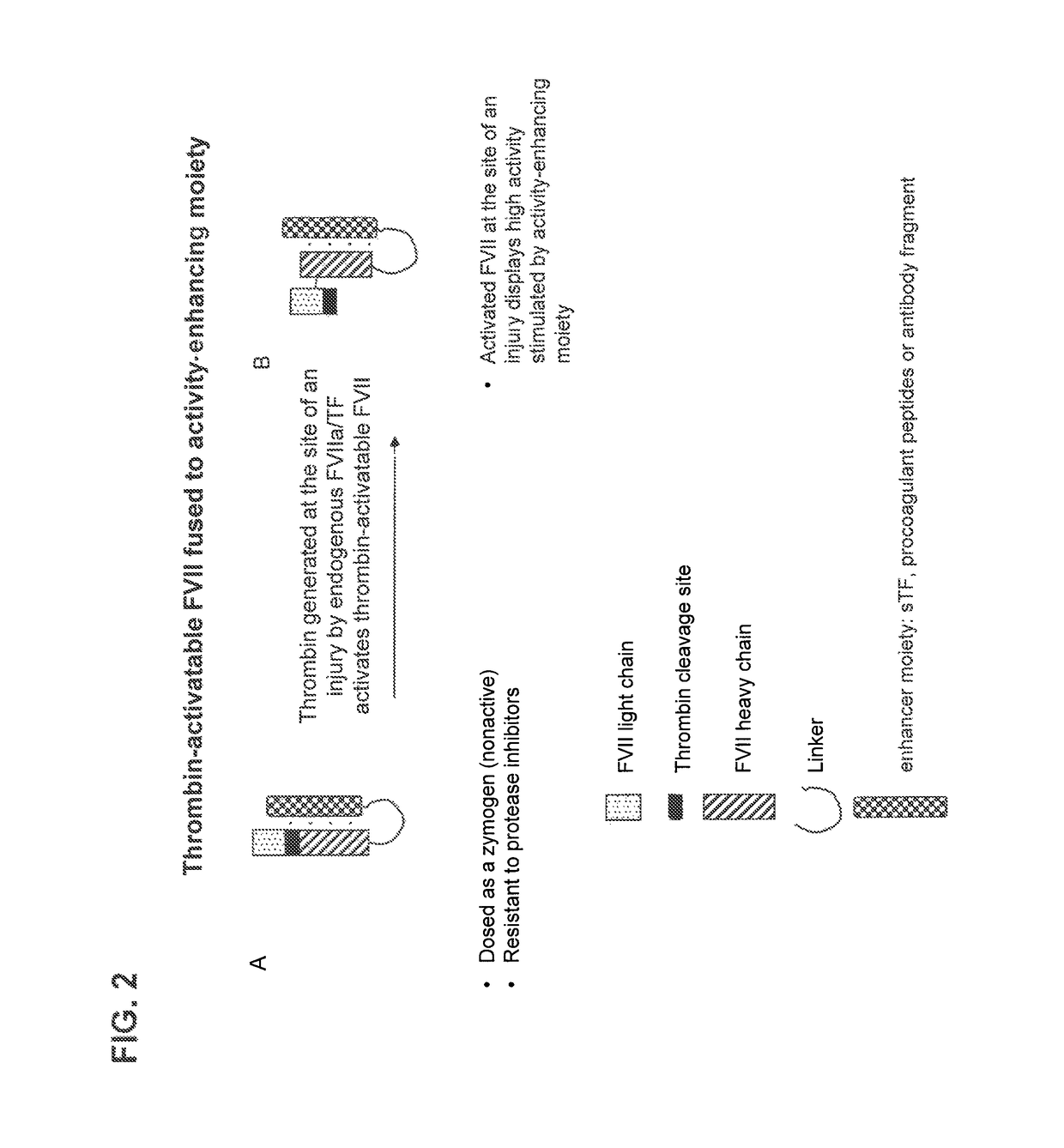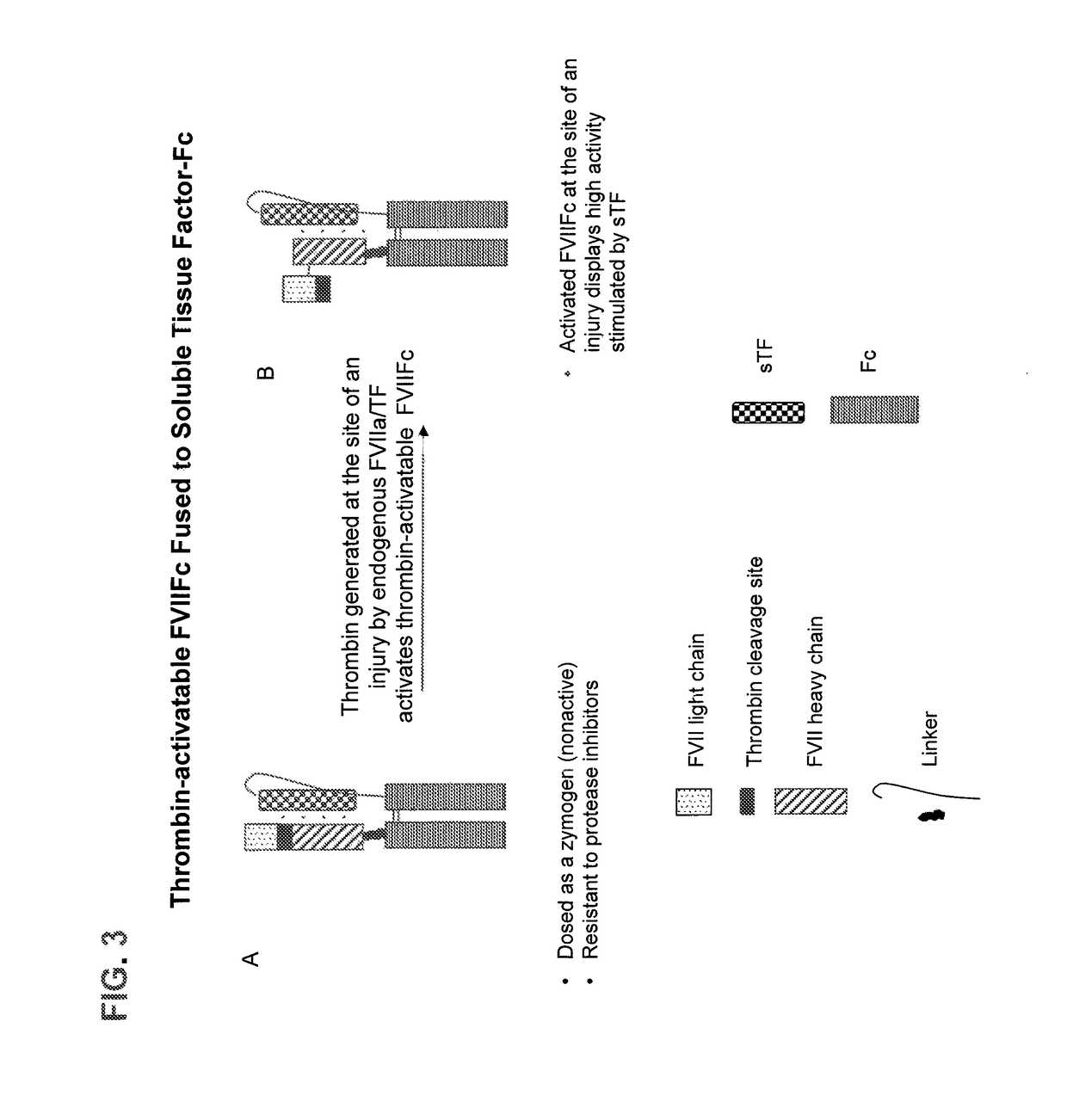Chimeric clotting factors
a technology of chimeric clotting factor and chimeric clotting factor, which is applied in the direction of drug compositions, peptide/protein ingredients, extracellular fluid disorder, etc., can solve the problems of fibrin clot formation, and achieve the effect of enhancing the activity of fvii or fx
- Summary
- Abstract
- Description
- Claims
- Application Information
AI Technical Summary
Benefits of technology
Problems solved by technology
Method used
Image
Examples
example 1
f FVII-133
[0414]The DNA sequence comprising nucleotides from the HindIII site to the first EcoRI site of FVII-133 was synthesized and subcloned into the HindIII / EcoRI sites of pBUD-CE4.1 (Invitrogen), generating an intermediate construct. Next, the DNA region comprising nucleotides from the first EcoRI site to the second EcoRI site of FVII-133 was synthesized and subcloned into the EcoRI sites of the intermediate construct to generate FVII-133 (FIG. 4A).
example 2
Expression of FVII-133
[0415]For expression of FVII-133, HEK-293-F cells were grown in Freestyle media (Invitrogen) supplemented with vitamin K3 (Sigma Aldrich, St. Louis, Mo.) to 2 μg / liter (growth media) as suspension cells at 37° C. / 10% CO2. Cells were subcultured every three to four days by seeding at cell density of 5×105 cells / ml.
[0416]Twenty-four hours prior to transfection, cells were seeded at a density of 7×105 cells / ml in growth media. On the day of transfection, a transfection solution was made with a volume equal to 5% of the total volume of the cell culture to be transfected. In the transfection solution DNA was added (final concentration 20 mg / L) to a freshly made solution of PEI (60 mg / L) in growth media. The solution was swirled for 30 seconds and incubated for five minutes at room temperature before adding directly to the cell culture. Four hours later a volume equal to the cell culture volume of OptiCHO (Invitrogen) supplemented with vitamin K3 and 200 mM L-glutami...
example 3
of Protein Generated from Transient Transfections
[0417]For analysis of protein from transient transfections, the conditioned media from cotransfections of FVII-133 with PC5 was subjected to protein A immunoprecipitation. Briefly, cell culture supernatant was mixed with approximately 50 μl of protein A-Sepharose 50% slurry and incubated at 4° C. with rocking for 1 hour, then centrifuged to pellet the protein A beads. Beads were washed twice by resuspending in 1 ml of PBS, spinning and aspirating. The beads were resuspended with sodium dodecylsulfate-polyacrylamide gel electrophoresis (SDS-PAGE) buffer under reducing or nonreducing conditions, heated for 5 minutes at 100° C., spun down and loaded on SDS-PAGE gels and run according to standard protocols. Under nonreducing conditions, 1 band with the expected molecular weight for the thrombin-activatable FVII-Fc / sTF-Fc dimer was observed (FIG. 4C). Under reducing conditions 2 bands were observed representing the thrombin-activatable FVI...
PUM
| Property | Measurement | Unit |
|---|---|---|
| molecular weight | aaaaa | aaaaa |
| molecular weight | aaaaa | aaaaa |
| molecular weight | aaaaa | aaaaa |
Abstract
Description
Claims
Application Information
 Login to View More
Login to View More - R&D
- Intellectual Property
- Life Sciences
- Materials
- Tech Scout
- Unparalleled Data Quality
- Higher Quality Content
- 60% Fewer Hallucinations
Browse by: Latest US Patents, China's latest patents, Technical Efficacy Thesaurus, Application Domain, Technology Topic, Popular Technical Reports.
© 2025 PatSnap. All rights reserved.Legal|Privacy policy|Modern Slavery Act Transparency Statement|Sitemap|About US| Contact US: help@patsnap.com



